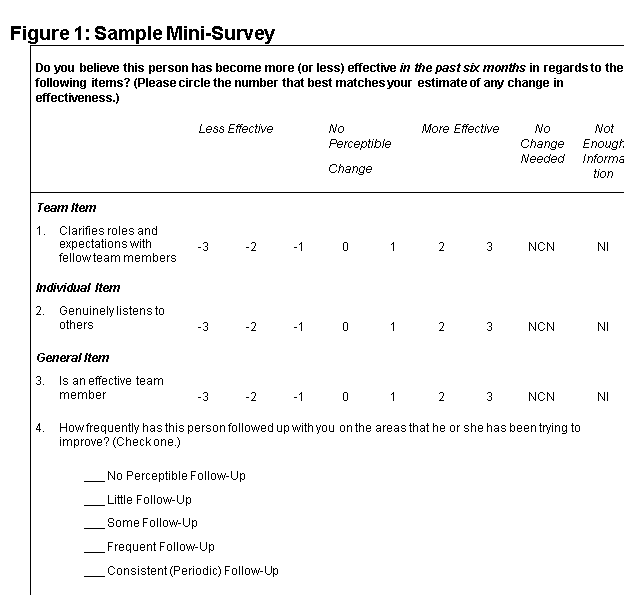Written by: Marshall Goldsmith and Howard Morgan
As major organizations have to learn to deal with increasingly rapid change, teams are becoming more and more important. As the traditional, hierarchical school of leadership diminishes in significance, a new focus on networked team leadership is emerging to take its place. Leaders are finding themselves members of all kinds of teams, including virtual teams, autonomous teams, cross-functional teams, and action-learning teams.
Many of today’s leaders face a dilemma: as the need to build effective teams is increasing, the time available to build these teams is often de¬creasing. A common challenge faced by today’s leaders is the necessity of building teams in an environment of rapid change with limited resources. The process of re-engineering and streamlining, when coupled with in¬creased demand for services, has led to a situation in which most leaders have more work to do and fewer staff members to help them do it.
Research involving thousands of participants has shown how focused feedback and follow-up can increase leadership effectiveness – as judged by direct reports and co-workers (Goldsmith and Morgan 2004). A parallel approach to team building has been shown to help leaders build teamwork without wasting time. While the approach described sounds simple, it will not be easy. It will require each team member has have the courage to regularly ask for – and learn from – ongoing suggestions from fellow team members.
To successfully implement the following team-building process, the leader (or external consultant) will need to assume the role of coach or facilitator and fight the urge to be the “boss” or “instructor”. Greater improvement in teamwork tends to occur when team members develop their own behavioral change strategies rather just executing a change strategy that has been imposed upon them by the “boss”.
Steps in the Process
Step One. Begin by asking all members of the team to confidentially record their individual answers to two questions: (1) “On a 1 to 10 scale (with 10 being ideal), how well are we doing in terms of working together as a team?” and (2) “On a 1 to 10 scale, how well do we need to be doing in terms of working together as a team?”
Before beginning a team-building process, it is important to determine whether the team feels that team building is both important and needed. Some people may report to the same manager, but legitimately have little reason to work interactively as a team. Other groups may believe that team-work is important, but feel that the team is already functioning smoothly and that a team-building activity would be a waste of time.
Step Two. Have a team member calculate the results. Discuss the results with the team. If the team members believe that the gap between current effectiveness and needed effectiveness indicates the need for team building, proceed to the next step in the process.
In the vast majority of cases team members believe that improved teamwork is both important and needed. Interviews involving members from several hundred teams (in multinational corporations) showed that the “average” team member believed that his or her team was currently functioning at a 5.8 level of effectiveness but needed to be at an 8.7 level.
Step Three. Ask the team members, “If every team member could change two key behaviors that would help us close the gap between where we are and where we want to be, which two behaviors we all should try to change?” Have each team member record his or her selected behaviors on flip charts.
Step Four. Help team members prioritize all the behaviors on the charts (many will be the same or similar) and (using consensus) determine the most important behavior to change (for all team members).
Step Five. Have each team member hold a one-on-one dialogue with all other team members. During the dialogues each member will request that his or her colleague suggest two areas for personal behavioral change (other than the one already agreed on above) that will help the team close the gap between where we are and where we want to be.
These dialogues occur simultaneously and take about five minutes each. For example, if there are seven team members, each team member will participate in six brief one-on-one dialogues.
Step Six. Let each team member review his or her list of suggested behavioral changes and choose the one that seems to be the most important. Have all team members then announce their one key behavior for personal change to the team.
Step Seven. Encourage all team members to ask for brief (five-minute), monthly three question “suggestions for the future” from all other team members to help increase their effectiveness in demonstrating 1) the one key behavior common to all team members, 2) the one key personal behavior generated from team member input, and 3) overall effective behavior as a team member.
Step Eight. Conduct a mini-survey, follow-up process in approximately six months. From the mini-survey each team member will receive confidential feedback from all other team members on his or her perceived change in effectiveness. This survey will include the one common behavioral item, the one personal behavioral item, and the overall team member item. A final question can gage the level of follow-up – so that team members can see the connection between their level of follow-up and their increased effectiveness.
This four question survey can either be electronically distributed electronically or ‘put on a postcard” and might look like the sample below.

Step Nine. Calculate the results for each individual (on all items) and calculate the summary results for all team members (on the common team items). Each team member can then receive a confidential summary report indicating the degree to which colleagues see his or her increased effectiveness in demonstrating the desired behaviors. Each member can also receive a summary report on the team’s progress on the items selected for all team members.
“Before and after” studies have clearly shown that if team members have regularly followed up with their colleagues they will almost invariably be seen as increasing their effectiveness in their selected individual “areas for improvement.” The group summary will also tend to show that (overall) team members will have increased in effectiveness on the common team items and overall team member behavior. The mini-survey summary report will give team members a chance to receive positive reinforcement for improvement (and to learn what has not improved) after a reasonably short period of time. The mini-survey will also help to validate the importance of “sticking with it” and “following up.”
Step Ten. In a team meeting have each team member discuss key learn¬ing from their mini-survey results, and ask for further suggestions in a brief one-on-one dialogue with each other team member.
Step Eleven. Review the summary results with the team. Facilitate a discussion on how the team (as a whole) is doing in terms of increasing its effectiveness in the key behavior that was selected for all team members. Provide the team with positive recognition for increased effectiveness in teamwork. Encourage team members to keep focused on demonstrating the behaviors that they are trying to improve.
Step Twelve. Have every team member continue to conduct brief, monthly, “progress report” sessions with all other team members. Re-administer the mini-survey eight months after the beginning of the process and again after one year.
Step Thirteen. Conduct a summary session with the team one year after the process has started. Review the results of the final mini-survey, and ask the team members to rate the team’s effectiveness on where we are versus where we need to be in terms of working together as a team. Compare these ratings with the original ratings that were calculated one year earlier. (If team members followed the process in a reasonably disciplined fashion, the team will almost always see a dramatic improvement in teamwork.) Give the team positive recognition for improvement in teamwork, and have each team member (in a brief one-on-one dialogue) recognize each of his or her colleagues for improvements in behavior that have occurred over the past twelve months.
Step Fourteen. Ask the team members if they believe that more work on team building will be needed in the upcoming year. If the team believes that more work would be beneficial, continue the process. If the team believes that more work is not needed, declare victory and work on something else!
Why This Process Works
The process described above works because it is highly focused, includes disciplined feedback and follow-up, does not waste time, and causes participants to focus on self-improvement.
Most survey feedback processes ask respondents to complete too many items. In such surveys most of the items do not result in any behavioral change and participants feel they are wasting time. Participants almost never object to completing four-item mini-surveys that are specifically designed to fit each team member’s unique needs. The process also works because it provides ongoing feedback and reinforcement. Most survey processes provide participants with feedback every twelve to twenty-four months. Any research on behavioral change will show that feedback and reinforcement for new behavior needs to occur much more frequently than yearly or bi-yearly. A final reason that the process works is because it encourages participants to focus on self-improvement. Many team-building processes degenerate because team members are primarily focused on solving someone else’s problems. This process works because it encourages team members to focus primarily on solving their own problems!
Let us close with a challenge to you (the reader) as a team leader. Try it! The “downside” is very low. The process takes little time and the first mini-survey will quickly show whether progress is being made. The “upside” can be very high. As effective teamwork becomes more and more important, the brief amount of time that you invest in this process may produce a great return for your team and an even greater return for you organization.
Related: How to Influence Decision Makers



